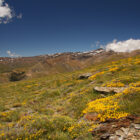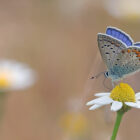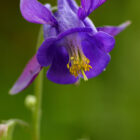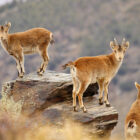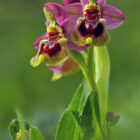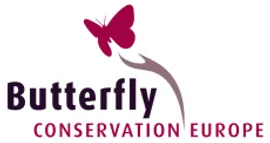Dates & Prices |
BOOK NOW |
Dates: 6th – 13th June 2026
Price: £1,695 places available
Single Room Supplement: £150
Deposit: £150 per person
Price Includes: All meals, accommodation, ground transport & transfers, services of guides & tour report
Not Included: Flights, travel insurance, entry to archaeological sites, drinks & any other personal items
Conservation Donation: Butterfly Conservation Europe
Leaders: Alice Hunter & Juan Carlos Poveda Vera +a local butterfly expert & researcher for some of the days
Group Size & Travel: Minimum of 5 and a maximum of 12 guests plus 2 leaders
Grade: Gentle pace and generally easy walks in a variety of terrains
Holiday Highlights
- A unique tour to explore three of Andalusia’s most biodiverse landscapes
- Some special local butterflies such as Spanish Swallowtail, Apollo (Parnassius apollo nevadensis), Sierra Nevada Blue, Mother-of-pearl Blue, Southern Blue, Lorquin’s Blue, Zullich’s blue, Panoptes Blue, Southern Brown Argus, and lots more!
- Endemic & interesting flora, including Pinguicula nevadensis, Veronica turbicola, Viola cazorlensis, Gentiana pneumonanthe subsp. depressa, Gentiana sierrae, Euphorbia nevadensis, Hormathophylla purpurea, Eringyum glaciale, Paeonia coriacea, Aquilegia cazorlensis, Periploca angustifolia, Ziziphus lotus
- Plenty of other wildlife to observe & we always make a point of including things of interest regardless of the main tour focus
- Visit famous & fascinating cultural sites & locations such as the Alhambra and the Alpujarras
- Contribute a donation to Butterfly Conservation Europe
Explore three of Andalusia’s most biodiverse landscapes for a remarkable mix of butterflies, endemic flora, and fascinating wildlife!
Sierra Nevada National Park Our journey starts in the Sierra Nevada, the highest mountain range in Europe after the Alps (with Mulhacén at 3,482 m being the highest in mainland Spain), offers a rich blend of unique ecosystems with fantastic natural and cultural heritage. Among its 80+ endemic plants, we’ll search for Pinguicula nevadensis, Veronica turbicola, Gentiana pneumonanthe subsp. depressa, Gentiana sierrae, Euphorbia nevadensis, Hormathophylla purpurea, and Eringyum glaciale. During our exploration of the area we’ll also visit the high-altitude Veleta Botanical Garden, the San Juan River reserve, and the Granada Geopark — a UNESCO site of desert canyons and fossil-rich terrain. Our base here is in cave houses, offering a truly unique stay. Cazorla, Segura y las Villas Natural Park We continue our adventures in what is Spain’s largest protected natural park and home to at least 134 butterfly species to look for. We’ll also take a short trail to the Linarejos Waterfall, where we can look for Viola cazorlensis and more butterflies. The area boasts Europe’s highest density of hoofed mammals, including Iberian Ibex, Red Deer, Fallow Deer, Mouflon, and Wild Boar. Birds of prey are also common: Lammergeier, Golden Eagles, and Vultures. Flora highlights of the area include: Paeonia coriacea, Lavandula lanata, Helleborus foetidus, Aquilegia cazorlensis, Narcissus longispathus, Primula elatior subsp. Lofthousei, Salvia lavandulifolia, Acer opalus granatense, Berberis hispanica. Orchids here include: Orchis quadripunctata, Neotinea lactea, and others. Cabo de Gata & Desert of Tabernas Next we head into the Desert of Tabernas (Europe’s only true desert). Together with the volcanic Cabo de Gata, this region offers rare plants like: Periploca angustifolia, Ziziphus lotus, Whitania frutescens, Limonium sinuatum, Verbascum charidemi, Pancratium maritimum. Bird species here include Trumpeter Finch, Black Wheatear, Iberian Grey Shrike, Hoopoe, and Rock Sparrow. Cultural Highlight: The Alhambra No visit to this region is complete without a guided tour of the Alhambra, a UNESCO World Heritage Site and masterpiece of Islamic architecture. We have allocated time to visit it on this tour. You’ll marvel at its gardens, palaces, and Moorish artistry. Nearby, we’ll continue our plant exploration with species like: Aquilegia nevadensis, Centaurea granatensis, Armeria filicaulis subsp. Trevenqueana, Erodium boissieri, Rothmaleria granatensis, Helianthemum pannosum. Final Stop: The Alpujarras Our second base is one of the traditional white villages of the Alpujarra. Surrounded by natural beauty and cultural heritage, we’ll explore trails rich in butterflies, with the possibility of moth trapping at night. Butterflies Butterfly highlights on this unique tour include special species including Spanish Swallowtail (Iphiclides feisthamelii), Apollo nevadensis (Parnassius apollo nevadensis), Sierra Nevada Blue (Polyommatus golgus), Mother-of-pearl Blue (Polyommatus nivescens), Southern Blue (Polyommatus celina), Lorquin’s Blue (Cupido lorquinii), the endangered endemic Zullich’s blue (Agriades zullichi), Panoptes Blue (Pseudophilotes panoptes), Southern Brown Argus (Aricia cramera). And, although it is probably a bit early, we’ll keep an eye out for sightings of the endemic Nevada Grayling (Pseudochazara williamsi) which is cited as critically endangered in the IUCN Red List for Europe. We’ll have a local butterfly expert with us on some days, who monitors the area. So, our observations will help expand the knowledge base about some of these rare and endangered and often endemic butterflies. That’s another way this tour contributes towards conservation, on top of the donation to Butterfly Conservation Europe. Tour Summary This journey combines incredible biodiversity, spectacular landscapes, and rich cultural heritage, making it a must for naturalists, botanists, butterfly lovers, and those seeking authentic experiences in southern Spain.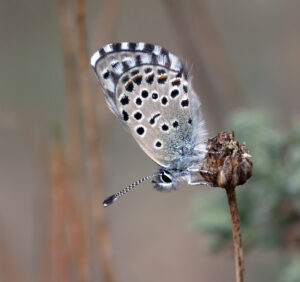




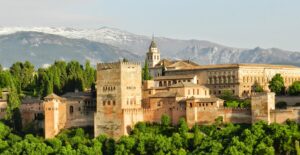

DAY ONE: GRANADA GEOPARK
Meet at Malaga airport and then transfer to our accommodation in Alcudia de Guadix, Geopark area (2 hours). If we have time, we can have our first excursion for butterflies and visit the Badlands landscape.
We will then spend four nights in special cave houses, in the region of Guadix.
DAY TWO: EL VELETA, SAN JUAN RIVER
Today we’ll be on the base of Veleta peak. We will visit the Botanical Garden to enjoy the flora and butterflies. Later we will make our way towards the San Juan Valley where we will be able to observe butterflies. We will also enjoy the endemic flora in this protected area and the interesting fauna (Iberian ibex will be present).
DAY THREE: CAZORLA, SEGURA & LAS VILLAS NATURAL PARK
After a two-hour drive, we´ll arrive in the Cazorla mountains. We will take a short trail, to visit the area on the Waterfall of Linarejos, plus we’ll look for Viola cazorlensis, other flora, plus of course butterflies and birds.
DAY FOUR: DESERT OF TABERNAS. CABO DE GATA
We will visit a special area, a semi-desert, and we will enjoy the landscape, flora & some birdwatching.
Plants include: Periploca angustifolia, Ziziphus lotus, Whitania frutescens, Limonium sinuatum, Verbascum charidem, Pancratium maritimum.
Birds include: Hoopoe, Black Wheatear, Iberian Grey Shrike, Rock Sparrow, and of course Trumpeter Finch.
DAY FIVE: ALHAMBRA. TREVENQUE, DOLOMÍAS
We’ll drive in the morning (1:20 h) to visit the Alhambra World Heritage Site, along with the Generalife and the Albaicín. During three centuries, a magnificent and rich Islamic culture flourished, leaving Granada with architectural marvels of the calibre of the Alhambra. We’ll need at least 3 hours to visit the palaces and Generalife Gardens, which will be with an official guide.
After our visit ends, we will move to the mid-mountain (20 minutes). A special area that rises to a height of 2,078 meters (Trevenque peak), with yet another unique landscape and associated endemic flora. At the base of this mountain, we’ll walk through native wild pine forests. It is the best area for dolomitic endemic flora as: Aquilegia nevadensis, Primula elatior subsp. Lofthousei, Armeria filicaulis subsp. trevenqueana, Centaurea granatensis, Convolvulus boissieri, Erodium boissieri, Rothmaleria granatensis, Helianthemun pannosum.
Later in the afternoon We’ll arrive in the Alpujarra (1,5 hours), Granada province, where we will be based for the last part of our tour.
DAY SIX: ALPUJARRA
Today, we will walk a path near the irrigation channels in an area close to 2.200 m. to look for butterflies.
An ancient pathway takes us towards the village of Capileira. As well as just simply enjoying the landscape, we’ll observe the flora, the ethnography, their Berber heritage and examples of the crafts of the area.
At night, we may be able have a light trap with a local moth expert, in order to check for moths.
DAY SEVEN: ALPUJARRA
Today, we aim to walk in the area of Pitres. This is an area experts from a local butterfly team are monitoring every year in conjunction with Butterfly Conservation Europe.
DAY EIGHT: AIRPORT TRANSFER
Transfer to Malaga airport for departures.
To follow
To follow





